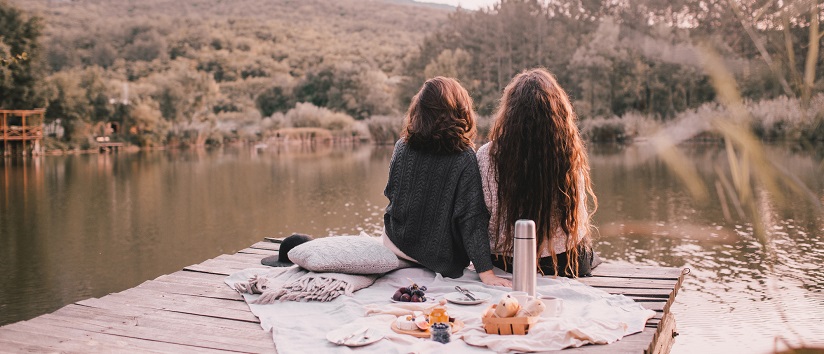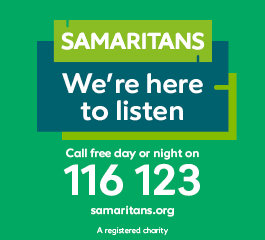4 Scandi and Nordic concepts to see you into a more mindful autumn
16 September 2021
As the days grow shorter and we are faced with colder months ahead (eventually), the time has come to look to our northern cousins, the Nordic and Scandinavian countries of Norway, Sweden and Denmark, for some autumnal lifestyle inspiration.
The past year has been a period of consistent contrasts, from being totally locked down, working from home, not socialising, to the world opening up, socialising, to locked down once again, during the darkest time of the year to once again emerging, and feeling tremendous pressure to ‘make the most’ of the freedom.
Now we are nearing the end of September, the colder months where things begin to slow down are on the horizon. For many, the shorter days and colder weather can signal the start of their seasonal affective disorder, and even those who don’t experience this might feel a knock in their natural levels of energy and motivation as midwinter creeps closer and closer.
However, with the slowing down comes an opportunity to utilise this autumn as a re-charge and reset. With the four Scandi and Nordic concepts and principles we will dive into in this blog, you will be armed with the knowledge to transform your autumn season into a period of rest, and mindful nourishment so that by the time midwinter does come round, your wellbeing might just have acquired some armour.
Hygge
Starting off with the classic that got many of us hooked on the idea of a Scandi lifestyle, hygge (pronounced hue-guh) is a word originating from Denmark to describe the feeling of being entirely content in a present moment and acknowledging that contentment.
Being present is a huge part of hygge and so is also described as “an art of creating intimacy”, this can be between yourself and your surroundings or preparing a space for yourself and friends. This intimacy in hygge is inextricably linked to cosiness. The process of doing this can be hugely beneficial to your wellbeing and act as a stress relieving technique.
“It isn’t as simple as just saying: ‘I’m not going to be stressed anymore’ and then following through. However, there are ways to slow things down a little and really make a difference – and allow yourself a bit of a break.” Brönte Aurell
From investing in some simple soft furnishing additions to your space that make it that classic hygge, cosy feeling, to crafting pieces yourself. An easy and affordable addition to your hygge set up is to paint your own glass tea-lights or mason jars, not only will the finished product give your space that warm, glowy feeling (perfect to be present in) but the process of crafting and creating can also allow us to be present, in a state artists and craftspeople call ‘flow’.
- See also: 'Scrapbooking, art, depression, and anxiety: how creativity can aid mindfulness'
- See also: 'Is doomscrolling the problem? Or is it the state of the world?'
- See also: 'I took two months off sick because of my mental ill-health and had the most fun in ages'
Friluftsliv
This slight mouthful, (pronounced free-loofts-liv) is a Swedish concept that translates roughly to ‘open-air living’ and is extremely common in the northern countries during the darker months to ensure people are getting that daily dose of vitamin D while they still can. Friluftsliv is most commonly recommended to those who experience seasonal affective disorder.
Speaking to Stylist, Swedish psychologist Niels Eék said:
“We have a saying in Sweden: ‘There’s no such thing as bad weather, only bad clothes’”
This saying is a great reminder that the benefits of a walk in the park, morning cups of tea in the garden, afternoons hiking and even having a picnic, are not limited as spring or summer activities when the weather is warmer and dryer.
As discussed in our article on forest bathing, time outside, especially around trees has been found to reduce stress levels, anxiety and actively reduce cortisol levels that is the stress hormone related to our fight, flight and freeze responses.
Koselig
Going by way of Norway now, koselig, is an update on that cosy feeling of hygge the Danish love and embrace. Pronounced, ‘koohshlee’, koselig is tricky to translate directly, but focuses on finding joy in the little things. Koselig differs from hygge in that it is all about our social bonds and togetherness, as well as our connection to nature.
Arne Kruse, a Scandinavian language expert explains for Forge: “It can describe a house, a situation, a meal, a conversation, or a person…this feeling of safe, warm, and good.”
Investing in these connections and simple experiences with one another during the colder, darker months (especially after such a full-on summer) is essential to get to the other side of the especially dark Norwegian winter, with their jovial, happy Nordic spirits intact.
Pyt
Finishing right where we started, the word pyt or ‘pid’ as it’s pronounced, is a Danish word that, once again has no direct translation. Like so many European languages with Nordic, Germanic and Slavic roots, it describes an attitude.
Marie Helweg-Larsen, a Danish psychologist breaks it down as such:
“It’s more a cultural concept about cultivating healthy thoughts to deal with stress… Pyt is usually expressed as an interjection in a reaction to a daily hassle, frustration or mistake. It most closely translates to the English sayings, ‘Don’t worry about it,’ ‘stuff happens’ or ‘oh, well.’”
Essentially, it is a life encompassing approach to the idea of only investing time and energy into the things you can control, whilst shedding and ‘letting go’ of those things you cannot, leading to reduced stress and energy to focus on other things.
Most importantly, it is tightly related to this notion of resetting. As such, the reason we ended this list of handy, Scandi and Nordic concepts with the idea of pyt is that the others in the list almost aren’t possible without this one.
Us Brits have long looked on at our ‘happy go lucky’ neighbours from the north with envy and bewilderment. This concept of only holding onto and spending energy on the things in our lives that we can absolutely control, is so ingrained in their culture that they even refer to a ‘pyt button’ for Danish children who are getting worked up or upset about something fairly minor. It’s a simple and elegant mantra to live by and it’s omnipresence in Danish culture could certainly be a key ingredient to the higher levels as happiness and fulfilment they experience as a nation.


Comments
Write a Comment
Comment Submitted